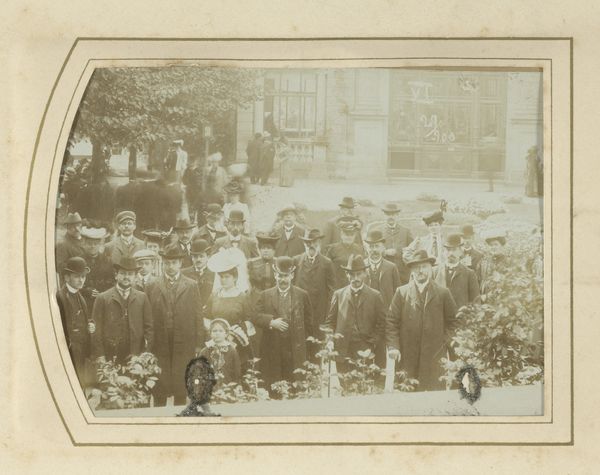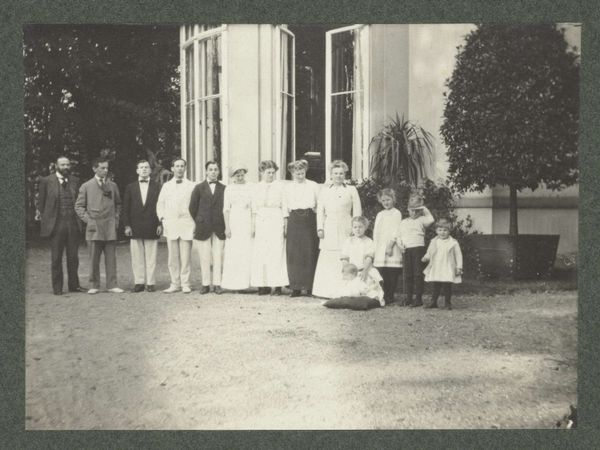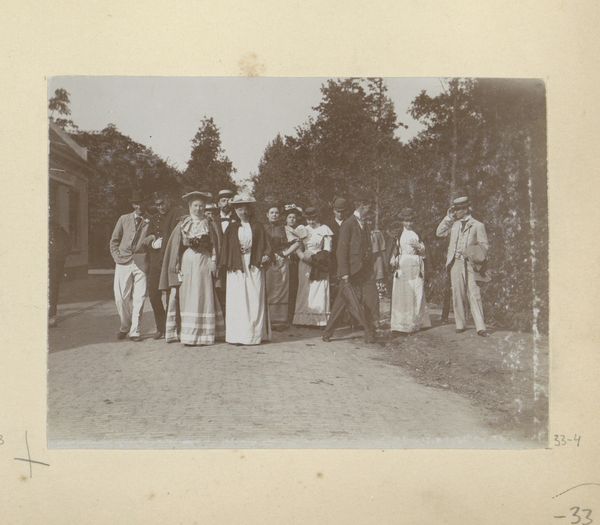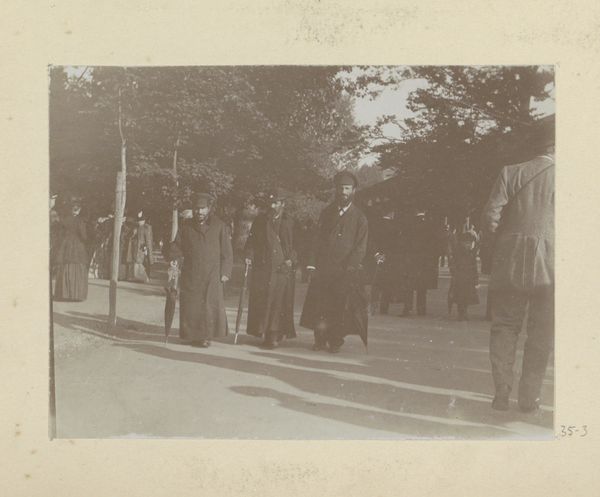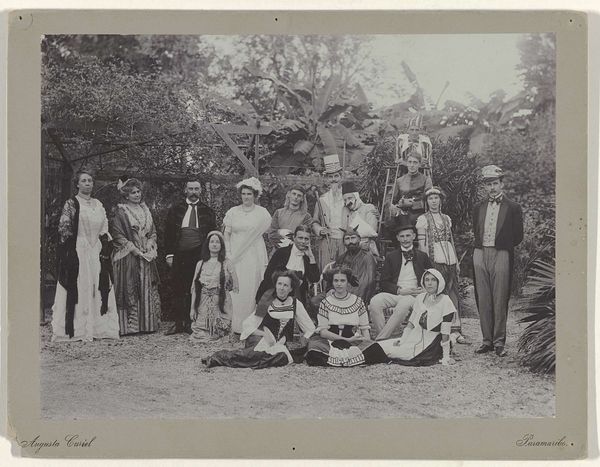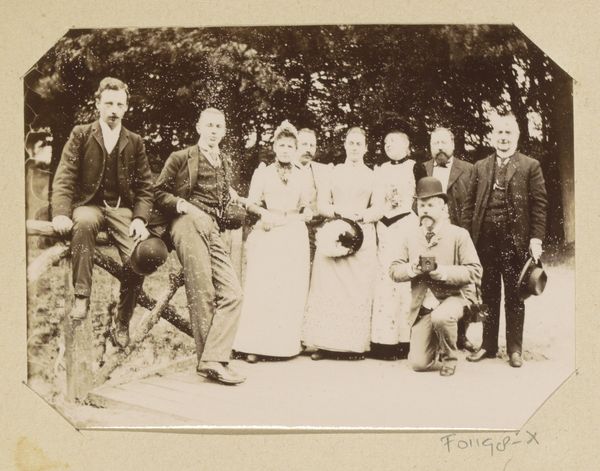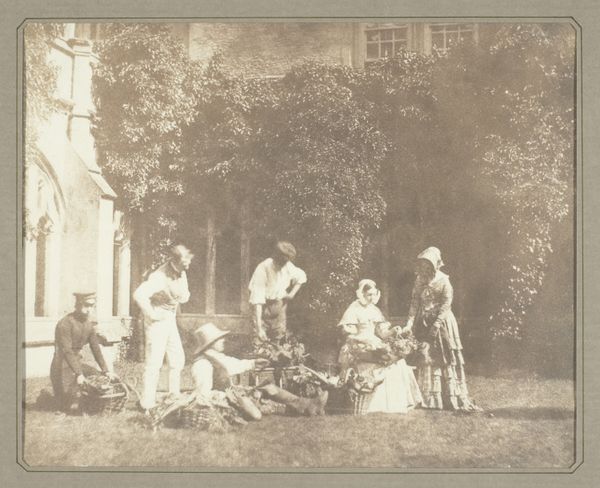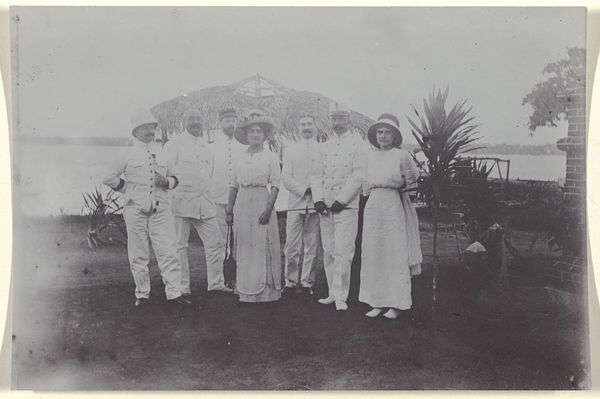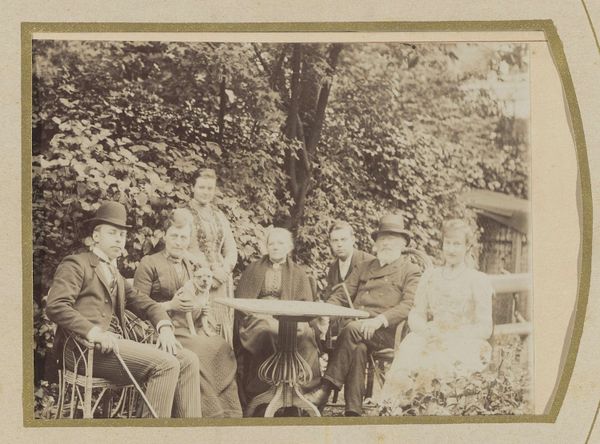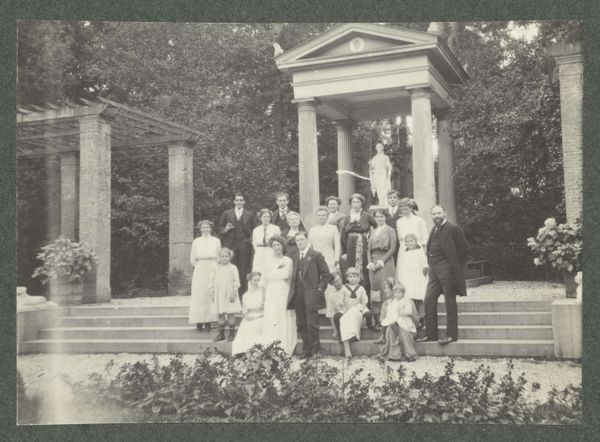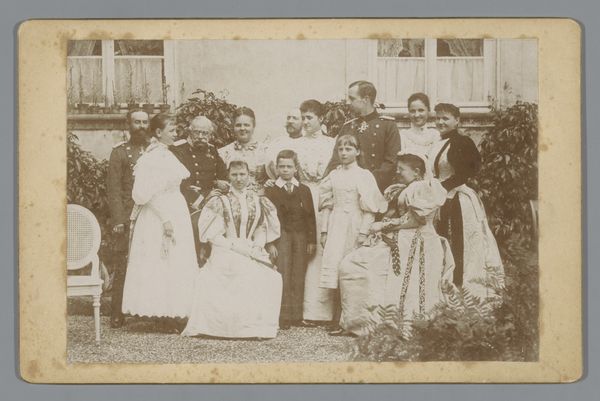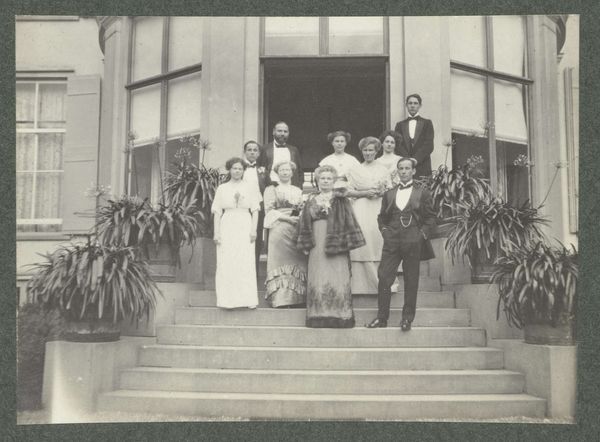
photography, gelatin-silver-print
#
portrait
#
german-expressionism
#
archive photography
#
photography
#
historical photography
#
gelatin-silver-print
Dimensions: height 63 mm, width 89 mm
Copyright: Rijks Museum: Open Domain
Curator: This gelatin-silver print, "Leerlingen van Schule Schloss Salem voeren toneelstuk op," or "Students of Schule Schloss Salem Performing a Play," dates from around 1929. It's a fascinating glimpse into a particular moment. What are your first impressions? Editor: Well, the costumes and props look very elaborate, given that it's just a school play. I’m also intrigued by the car in the background. What do you see in this piece, particularly regarding its materiality? Curator: I’m drawn to the labor involved here. Think about the photographic process of the time – the preparation of the gelatin-silver emulsion, the exposure, the developing. Each step involved careful, skilled work. And look at the costumes; are these created in house? Bought somewhere specific? The textures visible through the silver print are critical too. This image becomes not just a representation of the play, but a record of the social and economic networks necessary to stage it, to photograph it, and to archive it. Editor: So you’re saying the materials and processes used to create the image are just as important as the content of the image itself? Curator: Absolutely. Consider how access to photographic materials shaped who got to document their lives and activities. This school, Schloss Salem, was an elite institution. The photograph itself is evidence of their resources and access to a particular cultural sphere. Editor: That’s interesting, because at first glance, I was focusing on the performance aspects and overlooking the implications of how this image even came into existence. Curator: Exactly! Thinking materially forces us to question who had the power to create, document, and preserve these types of moments. Now how does that consideration affect our perception of it? Editor: It certainly makes me view it less as a simple school photograph and more as a product of a very specific time and class structure, which, in turn, dictates the type of "archive photography" it is considered now. Curator: Precisely! The labor, the materials, the context - they’re all interwoven. Editor: Thanks! I’ll definitely keep the "material lens" in mind moving forward.
Comments
No comments
Be the first to comment and join the conversation on the ultimate creative platform.
